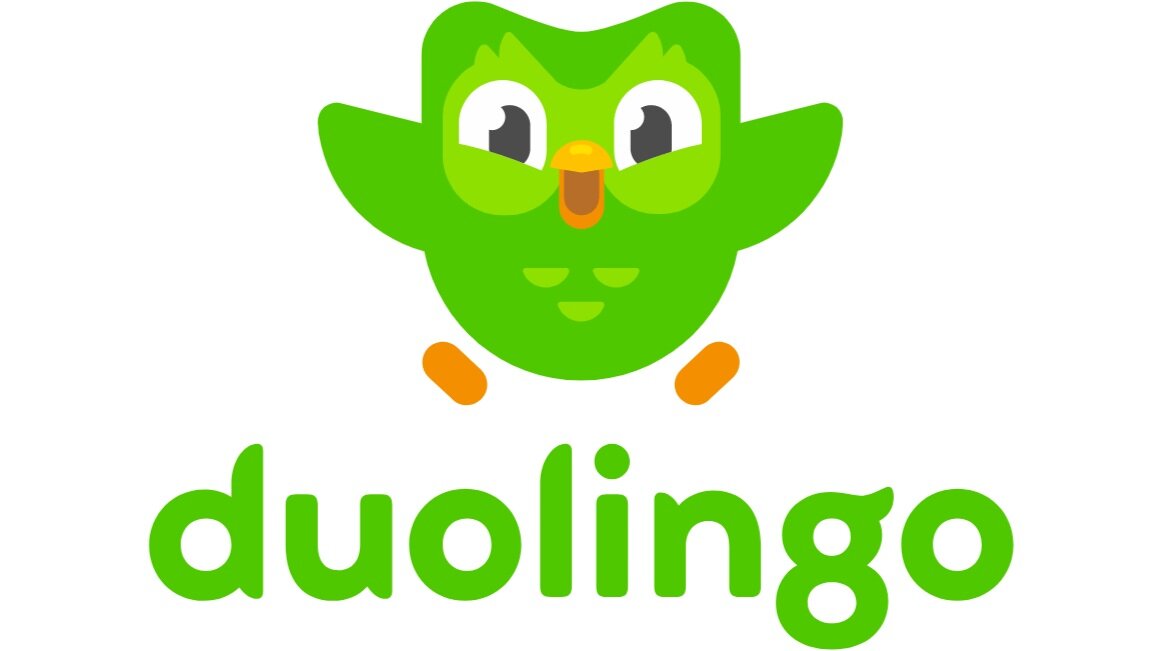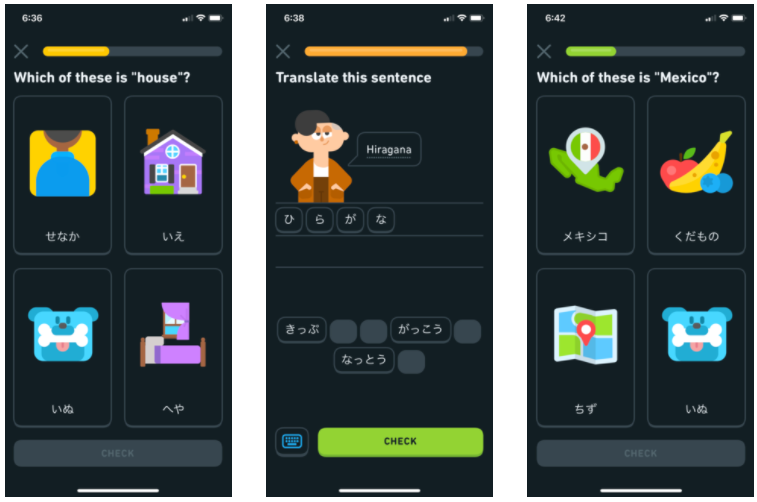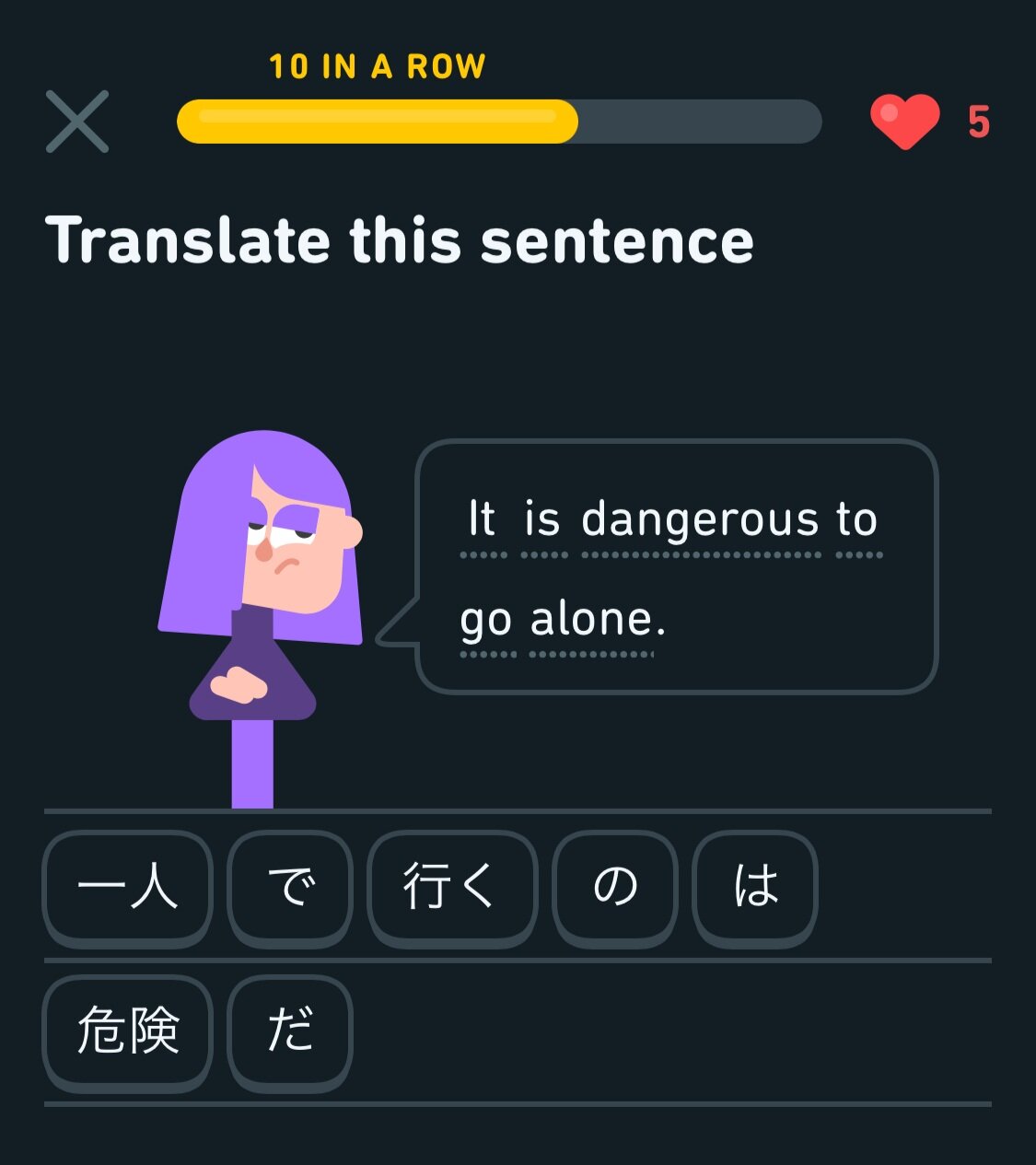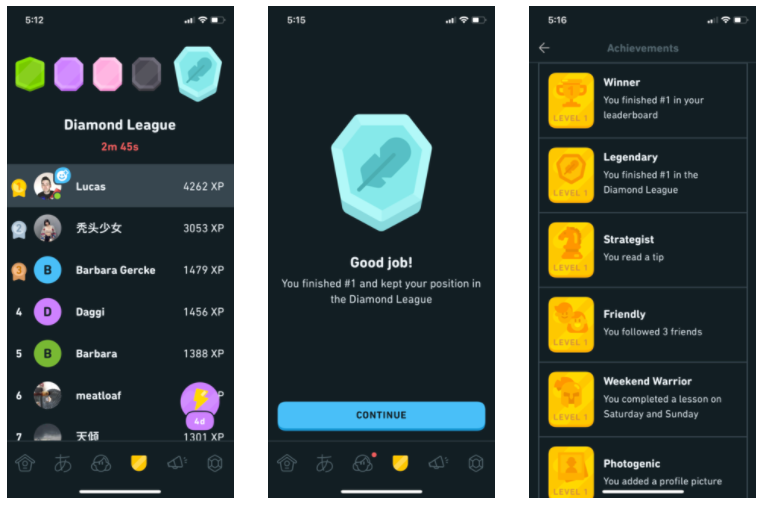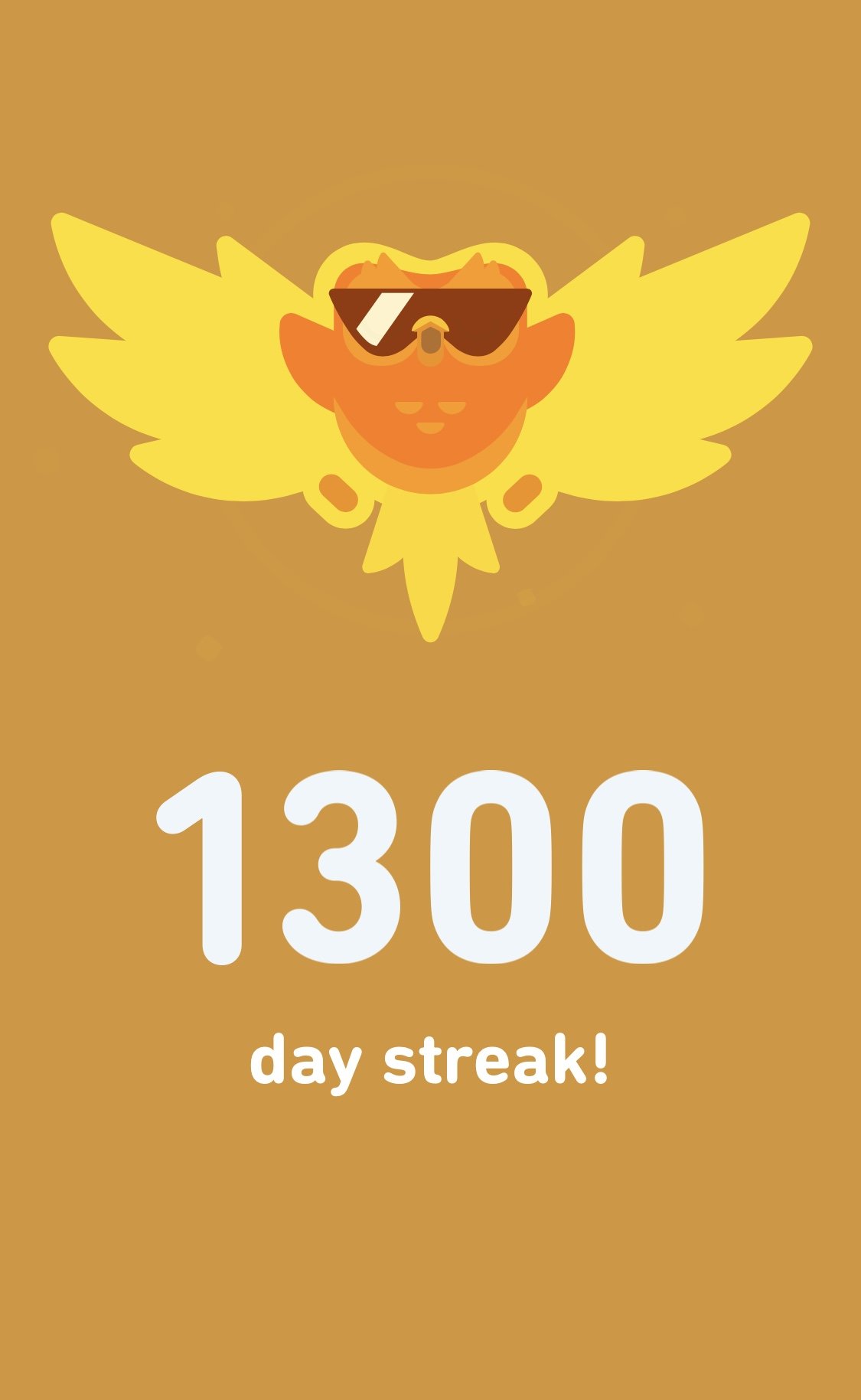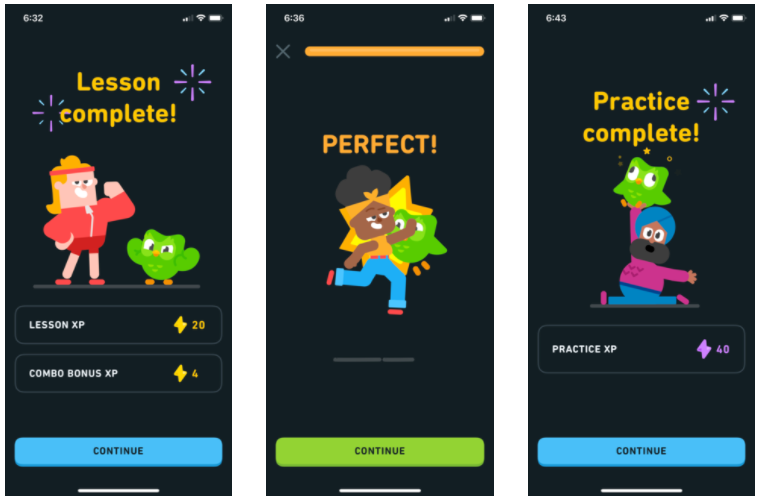Duolingo review
It’s strange to think that I first tried using Duolingo almost a decade ago. Way back in the day, I’d started using the app in the hopes that it would help me learn Italian. Looking at the dates, I must have even first used it in web page form, not on a phone. It’s always seemed like a fun learning tool, and potentially very useful, especially in comparison to other smartphone apps available.
However, despite my good intentions, I never actually did end up learning Italian. And I would speculate that is probably the experience most people have with Duolingo.
Learning a new language is, of course, notoriously difficult. Duolingo aims to aid in that goal by scaling down lessons and memory exercises into short sessions of just 5-10 minutes, making them accessible on the portable computers we all have in our pockets, and then gamifying the whole experience to make it habitual. It’s a winning strategy in theory. Using the app becomes a daily ritual, you practice your language of choice at least a little bit everyday, over time you end up spending like 10,000 hours on the app, and viola—tu parles francias!
In 2017, Duolingo added Japanese to its language options. Having studied Japanese in college and then lived in Hokkaido for a couple years, I was searching for something—anything!—to help me keep up my Japanese skills. At the very least, I needed something to slow the rate at which I was forgetting the language, as words and phrases left my memory at an alarming rate. And Duolingo seemed like the perfect mix of listening, reading, writing (typing, at least), and gamification to keep me actively engaged.
Over the next few years, I’d get into Duolingo for a while and then drop off. I’d build up a streak of 50 or 60 days or so, then neglect to do my daily lesson and lose it. The disappointment of seeing my streak disappear would sap all enthusiasm for Duolingo, and I then wouldn’t use the app for months. Eventually I would get back to it, but I still fell off the language-learning wagon several times. Of course then COVID happened, and none of us could really leave our homes. It was then that I really doubled down on Duolingo and got serious about making it a daily ritual.
Now, our task today is to review Duolingo as a game, and that begs the eternal question: How does Duolingo “play”?
Educational games tend to get a bad rap for simply not being any fun, and a language-learning app certainly falls squarely into the cursed “edutainment” realm. So is there any hope that Duolingo could actually be fun? Well, it would be a stretch to compare the enjoyment of Duolingo with something like, say, Tetris. But judged on its own merits—as a mobile app designed to get you studying daily—I would argue that Duolingo is surprisingly enjoyable.
Duolingo’s lessons are actually quite engaging, and often pretty funny too. The spoken audio is easy to listen to, and (at least in the case of Japanese) has greatly improved over the past few years. The app does a good job of ramping up difficulty: starting extremely basic and easy, but building upon the vocabulary and grammar you’ve already learned to increase the challenge. Even the green owl character, named Duo, is a cute enough mascot, cheery and inoffensive.
A fairly recent addition to the app has been Duolingo Stories, bite-sized short stories starring the app’s human characters. These are handy for working on one’s reading and listening skills, but also great because the conversations provide real context to the dialogue. When working through a more-challenging Duolingo lesson, the most difficult thing to decipher is offer the context in which a statement is being made. Stories, on the other hand, provide a pretense right up front, and it make it fairly easy to understand what’s going on overall.
The free version of the app gives you 5 Hearts which decrease as you make mistakes in lessons. This means Duolingo essentially has a Legend of Zelda-style Life Gauge, which is probably the most video game-y thing they could possibly include. Five hearts means that you have a limited number of mistakes you can make before you fail a lesson. With basic content early on, your allotted hearts rarely come into play. But as lessons grew more challenging, I did occasionally find myself struggling to finish a hard lesson, just a single error between me and failure. It can be a surprisingly tense situation, and the high-pressure learning feels extremely gamified.
Take my word for it: This sentence sounds oddly musical in Japanese and listening to it is downright hypnotic.
Now if you do happen to run out of hearts, it’s not like you automatically miss out for the day and lose whatever streak you have going. Hearts do gradually refill after a period of a few hours. Or—as Duolingo will immediately prompt with—you can watch an advertisement. One heart will refill for each ad you sit through. So one way or the other, you end up paying for your life in Duolingo with time. This is poetic, if somewhat depressing, in an existential way.
Since I’ve already mentioned streaks, I suppose we should explain Duolingo’s gamification elements, like the communal structure of the app. Duolingo has its own limited social network, and everyone is encouraged to connect to as many other users as possible. From your profile page, you can see not only your own stats, but the stats of your friends as well. This network visibility provides both an avenue for extending encouragement and also some friendly competition.
With every lesson completed you earn experience points (XP), usually about 10 XP per lesson. Your XP then serves as an approximate measure of how much studying you’ve accomplished over time. This number gets presented on a weekly and monthly basis, and summed up in an annual activity report. Your total XP, collected throughout your entire time on the app, gets shown to all your friends in your profile, acting almost like your high score.
Doulingo also has achievements, which can be earned by accomplishing various tasks. Achievements are linked to things like earning some amount of XP, reaching a streak of some length of days, learning some number words, completing lessons with no mistakes, etc. There are also minor achievements like adding a profile picture, or being followed by three people; tasks which would seem to benefit Duolingo more than you. And then there are achievements for more lofty or aspirational goals, like finishing #1 in your leaderboard, making it to Diamond League (the top-level leaderboard), and finishing #1 in Diamond League.
As you complete lessons and earn XP, and assuming you’re using the free version of the app, you’ll also be given ads to watch. Watching an ad—whether it’s for the app’s own paid version, Duolingo Plus, or for some other product—will earn you Gems or Lignots, Duolingo’s in-app currency. Unlike XP, your gems can be spent, used to purchase digital items in the app, like power-ups or a “new outfit” for Duo the Owl.
Which brings us back to the almighty Streak, perhaps Duolingo's strongest motivation tool. As one would expect, your streak is the number of consecutive days you’ve completed a lesson or practice. The app really emphasizes this number, especially as it grows larger and larger, strongly encouraging you to keep it up. As described earlier, losing a long streak is a fairly harsh blow to one’s motivation, so it makes sense that Duolingo would put a lot of effort into pushing users to maintain and extend it. Coincidentally, it also just happens to be an extremely clear measurement of user engagement for them.
Maintaining one’s streak is so important, in fact, that Duolingo has a Streak Freeze power-up. For just 200 gems, you can buy a Streak Freeze, which once equipped will save your streak from oblivion if you happen to miss a day of study. Two Streak Freezes can be equipped at a time, giving you a two-day grace period, should you happen to fall off the wagon. While purists might call this cheating, the Streak Freeze is a rather ingenious mechanic for keeping users engaged. Because again, losing a good streak is extremely demoralizing. Plus, since it’s a power-up you have to purchase with in-app currency, which can only be accumulated through studious practice, one could argue that you’ve earned the privilege to miss a day here and there.
Besides, you won’t get anywhere near my Duolingo streak.
And how could one cheat at Duolingo anyway? When you’re learning a language, the only real competition is with yourself…right? Well, that’s the funny thing about networked apps we have here, there’s almost always a social component baked in. And competition is a big motivator.
As one would expect, Duolingo does its best to leverage social pressure to keep their users engaged. There are your stats compared directly with your friends’ stats on the profile page, and there even are notifications you can get to alert you to your friends’ accomplishments. But even more potent are Duolingo’s weekly leaderboards, called Leagues. These leagues put you in direct competition with a pool of 30 strangers, and all competitors are ranked by the amount of XP they have earned throughout the week.
There are 10 Leagues one can rank in, each with its own name and badge icon, arranged in one big tiered hierarchy. The first three leagues are intuitively called Bronze, Silver, and Gold, with the league names shifting to gemstones thereafter; the top league being Diamond. Much like a European soccer league, these weekly leaderboards feature promotions and relegations. At the end of the week, top players get bumped up to the next league, bottom players are demoted a level, and the middle of the pack stays put. This provides added incentive to complete lessons consistently, either just to maintain your spot in a league, or to climb the leaderboards and go for total victory.
With this sense of competition established between users, the idea of “cheating” at Duolingo begins to make more sense. Especially in leagues, where one has to question if the other people you’re competing with are actual humans, or just bot accounts made to troll you. For most of my experience, it’s been virtually impossible to rank first in any league—even bottom-tier Bronze league—because there was always one profile that somehow managed to accumulate 10 times the XP of anyone else. Now that I know the best ways to rack up XP very quickly though, I finally understand why this happens.
While Duolingo is free, the app offers a paid subscription called Duolingo Plus. The main benefit of paying for Plus is that Duolingo will no longer show you ads. Plus also gives you unlimited Hearts, meaning that you can make infinite mistakes and never fail a lesson. So it’s like an Invincibility cheat. A more esoteric benefit of Plus is that it allows you to max out lessons—to complete the final “Legendary Level” of any particular lesson—without having to pay your hard-earned gems. The free version will charge you gems to do this. This Legendary Level can be a way to score tons of XP very quickly, and thus the secret to dominating the leaderboards. But due to how it’s set up, you’ll need to have Duolingo Plus to make it work.
Now, I haven’t actually paid for a Duolingo subscription in all my years using the app. But I have tried Plus on a two-week trial basis a couple of times, just to test the waters. (And to dominate the higher leagues, once I discovered how that works.)
I probably should pay Duolingo some money, considering how much I’ve used their app.
As I got pretty serious about studying Japanese with Duolingo, I made a daily goal of 20 XP and saw my total XP consistently rise. When I compared my numbers to my connected friends, however, it seemed unlikely that I would ever achieve my group’s high score. Now this is purely anecdotal, but from my vantage point, it seems like a typical novice user might collect somewhere between 100 and 1000 XP before dropping the app (presumably forever). More studious learners might use Duolingo for a few months, netting an XP total closer 5,000 or more before calling it quits. And then there are the people who’ve used the app on and off for a year or more, whose totals span a huge range from like 8,000 to 18,000 XP. Even with longer term users though, I rarely see a profile break 20,000 XP.
Somehow though, my old karate friend Jonathan—who clearly hasn’t used the app at all for quite a while—had an insane XP total above 25,000! My long term goal for Duolingo then became somehow topping his impossibly high score. Eventually I would come to learn that the vast majority of Jonathan’s points actually came from reviewing article translations, an early feature of Duolingo which I’m not sure even exists anymore. Regardless, XP is forever, so Jonathan remained atop High Score Mountain. Until, that is, I eventually figured out how to effectively game the system. After which, I was able to overtake Jonathan’s score and then some!
OK, so let’s address the elephant in the room: Does Duolingo actually work? Can you really learn a new language through daily use of an app?
Well, I’d say the biggest factor in answering that question is probably what level of fluency you personally hope to attain. Because you can definitely learn a lot by studying through Duolingo, but you should also be doing some kind of language study outside of the app. As helpful as it might be in your learning journey, Duolingo alone isn’t enough to lead one to mastery.
It’s kind of like those cereal commercials, the ones where they’ll say something about their product being “part of a complete and balanced breakfast”, then show a massive tray with eggs and toast, a bowl of fresh fruit, maybe even a waffle on the side, and a glass of milk, or orange juice, or both! Duolingo is great, sure, but it does not a balanced breakfast make.
That said, just because something isn’t a surefire, “magic bullet” solution, doesn’t mean it’s not useful. Any tool can be helpful without being the be-all-and-end-all.
And most importantly, Duolingo is actually kind of fun. I certainly wouldn’t have stuck with the app this long if it wasn’t at least somewhat enjoyable. The lessons are certainly well-designed, they even sneak in a random joke here and there as easter eggs, which is delightful. The human characters they’ve introduced are distinct and put a fun spin on things. And even Duo is a decent mascot.
If you’re looking for a way to study a new language—or even better, to keep up with grammar and vocabulary you’ve already learned, but are likely to forget—then Duolingo is a great option. As far as mobile apps go, this one really is top-tier, even if you’re only using the free version.

